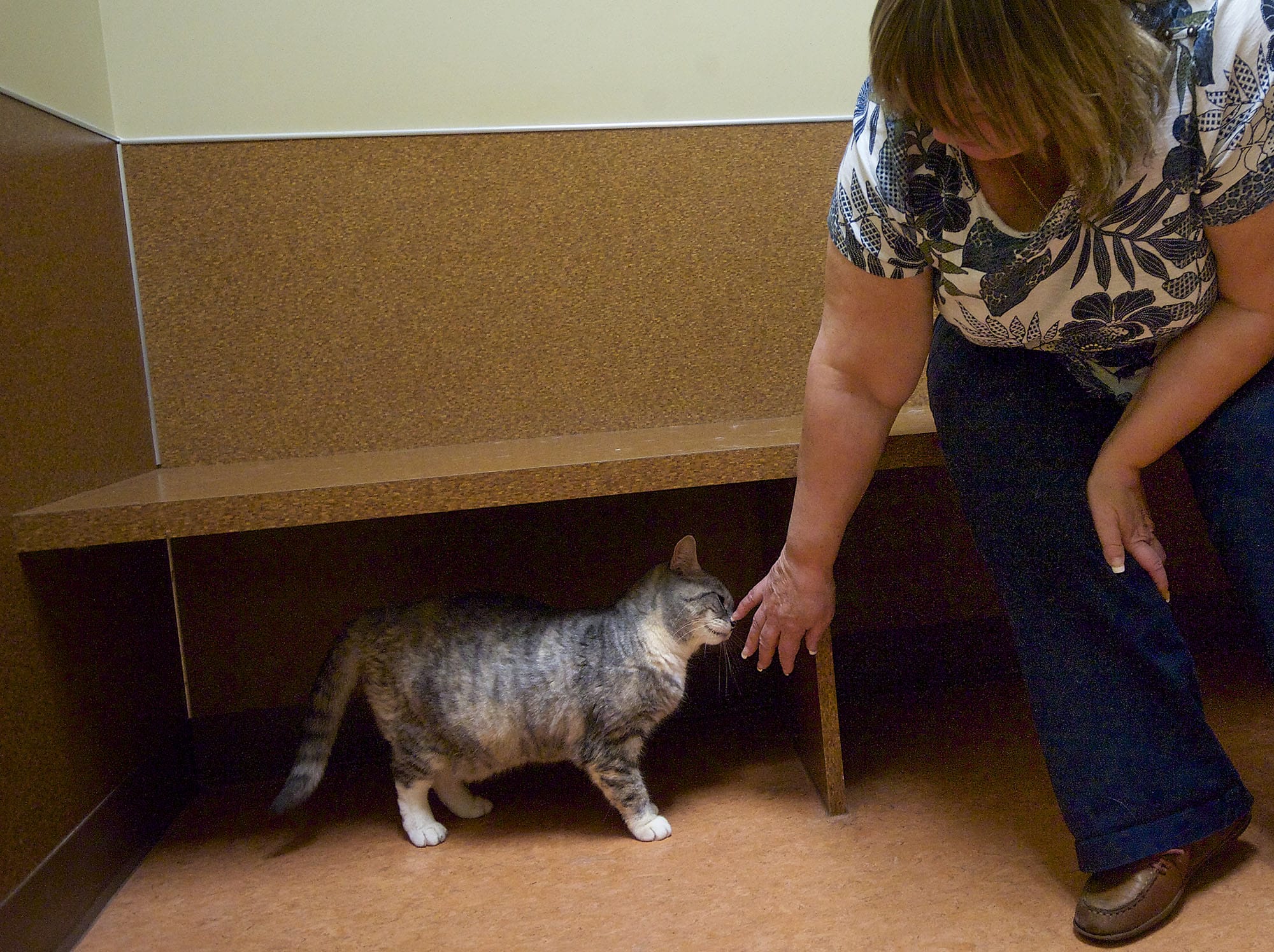Did you know?
The breeding cycle for cats is starting later and later in the summer, so kittens are up for adoption in the winter.
Fewer strays come into the Humane Society for Southwest Washington these days, while more of its available pets get adopted.
The shelter’s shrinking animal intake reflects a regional decline in stray cats that’s attributed to low-cost spay-and-neuter programs in the metro area. Years ago, the shelter received 2,000 to 3,000 kittens during the summer, said Lisa Feder, vice president of shelter operations. Now it’s fewer than 1,000.
In general, more people are aware that cats need to be fixed, she said.
Also, fewer pet owners are surrendering their cats to the shelter. Dog intake, however, increased slightly this year due to the shelter’s transfer program. Most of the dogs come from shelters with high euthanasia rates, locally or in California.
“We’re seeing about the same number of stray dogs,” Feder said.
Today, 88 percent of the animals that come into the Humane Society leave the shelter alive. That figure counts lost animals reclaimed by their owners, or animals transferred to rescue groups or other shelters. Those that are euthanized have severe issues, either medical or behavioral.
“We aren’t the same organization that we were even a few years ago,” said shelter president Stacey Graham. “It’s a great time to be part of animal welfare, I think.”
Now, they’re taking in animals they wouldn’t have previously, such as cats with feline immunodeficiency virus, a cat version of HIV.
Just eight years ago, the majority of animals that came into the shelter were euthanized. That’s before the shelter moved from its former spot in west Vancouver to its current location on Northeast 192nd Avenue in east Vancouver.
The newer facility came with its own bells and whistles, such as improved ventilation, additional kennel space and room for community events.
“It’s much more healthy for the animals,” Feder said.
Changes, animal enrichment
Over the last year, the Humane Society added programs and bolstered some of its existing ones, most of which were started by volunteers.
“There’s a lot that’s been going on,” Feder said.
The shelter recently wrapped up its second session of Youth Enriching the Lives of Pets, a Juvenile Recovery Court program. As part of their sentence for drug-related crimes, youth work with shelter animals for a couple of hours each month and do a presentation on what they learned.
The third session starts next month.
In September, the new ReTails Thrift Store opened off East Fourth Plain Boulevard. Feder said it became burdensome to operate multiple stores, so they decided to consolidate into one, larger store.
“We wanted to refocus and rebrand the ReTails store,” she said.
ReTails generates about $1 million annually for the shelter. In the future, the shelter may open a specialized boutique, Feder said.
This summer, the Humane Society worked on a project dubbed Freedom Fence. Tara Zimmerman, who leads the canine enrichment program, found that most behavioral problems were caused by a lack of exercise.
“Our average stay is 13 days, but that’s a long time to go without play,” Graham said.
Zimmerman helped the shelter design two off-leash areas — one for small dogs and one for big dogs — that opened in October. Giving the pooches a place to romp around daily improves anxiety levels and kennel stress, which makes the dogs more adoptable.
People looking to adopt a pet are often looking for a connection, Graham said. They’ll be drawn to an animal that reaches out to them or interacts with them some way, whether it’s playfully batting a paw through a kennel grate or wagging a tail with an eager look.
“They love us in spite of ourselves. … We could be late. We could have lost our jobs. There are a lot of things they don’t care about,” Graham said. “We say a lot around here, we think we save them, but they save us.”




